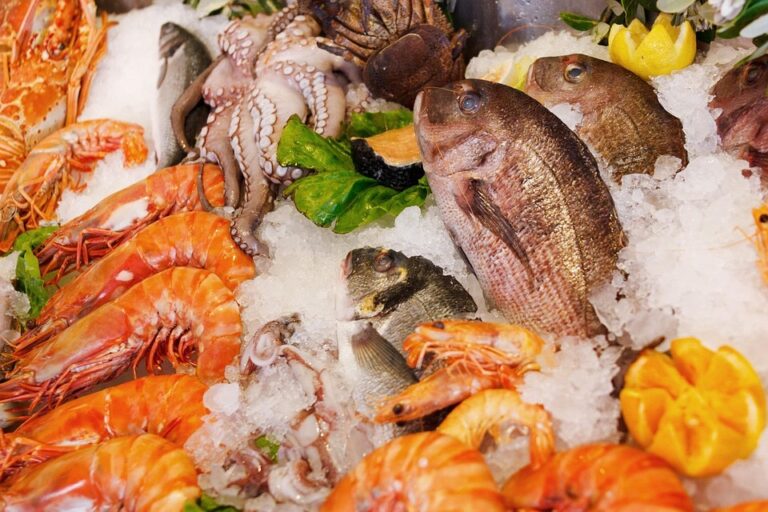Navigating the Future of Sustainable Seafood: Choices for a Healthier Ocean and Planet
As our world faces unprecedented environmental challenges, the culinary choices we make play a significant role in the health of our oceans and planet. Sustainable seafood has emerged as a critical concept that reflects our growing awareness and responsibility toward marine ecosystems. This article delves into the importance of sustainable seafood, the choices consumers can make, and the broader implications for our oceans and the planet.
Understanding Sustainable Seafood
What is Sustainable Seafood?
Sustainable seafood refers to fish and other seafood harvested in a manner that maintains the health of fish populations, supports the integrity of marine ecosystems, and safeguards the livelihoods of communities dependent on these resources. Essentially, sustainable practices ensure that fishing will not diminish the ability of future generations to enjoy seafood.
The State of Global Fisheries
According to the Food and Agriculture Organization (FAO), approximately 34% of global fish stocks are overfished, with another 60% being fully exploited. These statistics highlight the urgent need for sustainable seafood practices to preserve marine biodiversity and promote responsible fishing.
Why Choose Sustainable Seafood?
Sustainable seafood offers numerous benefits—both to the environment and to consumers. Here are a few key reasons:
Protecting Marine Life
Sustainable fishing methods reduce overfishing and mitigate the harmful impacts of destructive fishing practices, such as bottom trawling, which can devastate ocean habitats. By choosing sustainable seafood, consumers help protect vulnerable species and ecosystems.
Supporting Coastal Communities
Sustainable seafood initiatives often prioritize local fisheries and communities, ensuring that the economic benefits of fishing are shared fairly. This approach helps sustain local jobs and promotes responsible fishing practices.
Healthier Eating
Consuming sustainable seafood often means supporting farms and fisheries that prioritize environmental stewardship and fish health. Fish raised or caught sustainably are less likely to contain harmful chemicals or toxins, making them a healthier option for consumers.
Navigating Your Seafood Choices
Labeling and Certifications
One of the best ways to ensure you are making sustainable seafood choices is to look for recognized certifications. Here are some key labels to watch for:
- Marine Stewardship Council (MSC): This certification indicates that the seafood comes from a fishery that adheres to sustainable practices.
- Aquaculture Stewardship Council (ASC): This label is for responsibly farmed seafood, ensuring that aquaculture methods do not harm the environment.
- FishChoice: An online resource, FishChoice provides consumers with comprehensive information on sustainable seafood sources.
Practical Tips for Consumers
Here are some practical tips for navigating your seafood choices:
- Ask Questions: At restaurants or markets, inquire about the source of the seafood. A responsible vendor should be able to provide you with details about sourcing and sustainability.
- Research: Websites like the Monterey Bay Seafood Watch offer consumer guides that categorize seafood options based on sustainability.
- Avoid "Red-Flag" Species: Certain species, such as bluefin tuna and overfished cod, are often labeled as unsustainable. Opt for alternatives that are caught or farmed sustainably.
The Future of Sustainable Seafood
As consumers become increasingly aware of the impact of their choices, the demand for sustainable seafood continues to rise. Innovations like aquaponics and sustainable fish farming are promising developments for the industry. For example, aquaponics combines fish farming with hydroponics, allowing for a symbiotic environment where plants and fish thrive together while minimizing the use of resources.
Environmental Accountability
Governments and organizations worldwide are beginning to emphasize sustainable fisheries management through stricter regulations and initiatives. The United Nations has highlighted sustainable fisheries as a key component of the 2030 Agenda for Sustainable Development, recognizing the importance of marine ecosystems in global health and prosperity.
Conclusion: Making a Difference One Meal at a Time
In conclusion, navigating the future of sustainable seafood is a collective responsibility. By making informed choices, we contribute to the health of our oceans, support local communities, and ensure that seafood remains a viable option for future generations. As consumers, our day-to-day decisions can influence industry practices, helping to promote more sustainable and ethical fishing methods.
For more insights on sustainable living, check out our articles on:
For further reading on sustainable seafood certifications, please refer to the Marine Stewardship Council.
Disclaimer: Buzzo.live is not responsible for the content provided in this article, which is for informational purposes only. It should not be considered professional advice or guidance.
Images suggested for the article:
-
Image of Sustainable Seafood Products
- Alt text: “A selection of sustainable seafood options including fish and shellfish.”
- Image of a Community Fishery
- Alt text: “Fishing community engaging in sustainable practices, promoting healthy oceans.”
By focusing on sustainable seafood, we can help foster a healthier ocean, a thriving ecosystem, and a happier planet.


